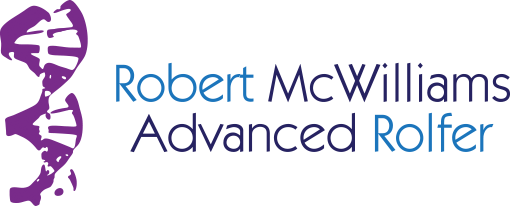These posts are written for a diverse audience: potential Rolfing® clients who are trying to get a feel for what the work is like, and if it’s for them, as well as newer Rolfers™ looking for ideas for session work, and possibly even more experienced practitioners comparing notes and looking to get new ideas or insights. I do it all the time. Why not? If you’re a Rolfer, red the whole thing! If you’re a potential client, skim through it and see what stands out to you as interesting. It may not all make much sense. Contact me if you have questions. I love talking about this work.
There contemporary client is often like this. DS had major spinal fusions in her lumbar and cervical spine areas after a bad motorcycle accident that she had initially ‘walked away’ from with nothing except knee pain. MRI on the knee revealed no damage, but on the lower spine, later imaging revealed major problems which required surgery.
Today was my second session with her, the first being a month ago. In that one, I mostly ‘put out fires’ by easing peripheral nerves, but also gave her tools to strengthen the support around her lower back and sacroiliac area. Today I decided to start really working to improve her support from the ground. After gentle work to release the nerves in her neck for 15 minutes, I began the deep work into the legs that is one of the hallmarks of Structural Integration: work on the calves and feet to help the back ( we call it “Second Hour” type work). When I do any second hour, I always check the peripheral nerve involvement first, be it from the lower spine, abdomen, thigh or in the leg (calf region). I am also checking the basic shape (morphology) and axes of motion in ankle, knee and hip.
When you pay attention to the nerves, your hands get sensitized to problem areas. They just stand out to me as a tightness or a cable-like feel when they are inflamed or otherwise impinged. Joint levers don’t work normally, either, making a leg or arm feel unnaturally heavy in motion testing ( which I do constantly). Sometimes I focus on treating the nerve itself through slacking, pulsing or stretching it at the depth that I sense will do it some good ( often not very deep, including skin manipulation called dermoneuromodulation created by Diane Jacobs). Sometimes, though, I will work a complementary structure at the other side of a joint that I feel is pulling o that nerve and causing the problem ( ok, I probably will hedge bets and do both, but put more time and attention in one tan the other as appropriate). In DS’ case, strain in the tibial branch of her left sciatic nerve was markedly eased by working to ‘un-bow’ her left knee, including but not limited to rolling the quadriceps tendons medially, work at the back of the knee on popliteous and soles at the line of insertion.
To beginning Rolfers out there: when I do “Session Two” work, I also will ‘feather in’ work from related sessions such as four or six. Deep work along the adductors ( relating to session four) hamstrings ( after that sciatic nerve eased; from Sixth Hour in intent but in First Hour position), and even on hip abductors ( from Thurd Hour, lower body aspects).
It’s also important for me to just respond to the first thing I see. When DS walked, she held her arms very still at her sides. She had always had people remark on that, even before the accident, she said. She is small in stature at maybe 5′ tall, but her arms and shoulders are kind of large. I asked her if she and any feelings about how they looked, and she mentioned that she does feel self-conscious about them. Now this was actually the first stuff we worked on, before we did any “table work” today. I had her just stand and feel into the whole size of her body, and let herself occupy her whole space. I did not look at her while she was doing this, nor when she took that sense into walking, until after a minute of her own experimentation with that. “What is it like to breathe when you let your self fill your whole space like that?”” A lot easier!” “Do you notice you let your arms move more, too”” Yes!”
That ‘body image’ work at the beginning, combined with fascial (we were able to deep neck work in a seated position, opening scalenes and levator scapula through simple head rotations with deep contact from me in these areas), neural, joint release ( we did gentle yet effective osteopathy-derived techniques to release and balance the bones of the pelvis/lower spine) and reviewed her fitness goals ( walking; twisting exercises to cinch up the lumbodorsal fascia through waking up the internal and external oblique muscles). She has been doing lot better since the first time she came in a month ago, and was really happy about the progress, sense of ease and smoothness in gait and lack of lower back pain.
Basically, if you made it this far, you’re probably either another Rolfer or just naturally really curious. Great!!
What do you think? Let me know.
(303) 887-6764 (in Colorado)
robmcwilliams@mac.com
